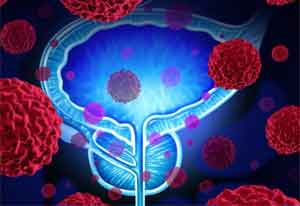- Home
- Editorial
- News
- Practice Guidelines
- Anesthesiology Guidelines
- Cancer Guidelines
- Cardiac Sciences Guidelines
- Critical Care Guidelines
- Dentistry Guidelines
- Dermatology Guidelines
- Diabetes and Endo Guidelines
- Diagnostics Guidelines
- ENT Guidelines
- Featured Practice Guidelines
- Gastroenterology Guidelines
- Geriatrics Guidelines
- Medicine Guidelines
- Nephrology Guidelines
- Neurosciences Guidelines
- Obs and Gynae Guidelines
- Ophthalmology Guidelines
- Orthopaedics Guidelines
- Paediatrics Guidelines
- Psychiatry Guidelines
- Pulmonology Guidelines
- Radiology Guidelines
- Surgery Guidelines
- Urology Guidelines
NICE approves New therapy for benign prostatic hyperplasia

More than a third of men over the age of 50 have benign hypertrophy of Prostate which causes difficulty in passing urine.Drugs or an operation can help, but the National Institute for Health and Care Excellence says men should now be offered another treatment option.A new non-invasive therapy, prostate artery embolisation has been recommended by NHS which is safe and covenient. It blocks some of the blood supply to the prostate using tiny synthetic beads, causing the troublesome tissue to shrink and die.PAE can be done under local anaesthetic as a day care procedure, unlike conventional prostate surgery.
Prostate embolisation for benign prostatic hyperplasia (BPH) is a new procedure which is considered when other forms of treatment are deemed unsuitable or high risk. It is non invasive and doesn't have side-effects of surgery including impotence.Men who have benign prostatic hyperplasia who are looking for a treatment option that is effective and does not involve drugs or major surgery may want to consider prostate artery embolization (PAE)
In Prostate Artery Embolisation a fine, flexible plastic tube about as thick as a spaghetti strand (catheter) is inserted into an artery in the groin. Using x-ray monitoring to check its position, the catheter is guided into both your prostate arteries (right and left). A special X-ray dye, called contrast medium, is injected down the catheter into these prostate arteries, and this may give you a hot feeling in the pelvis. Once the prostate blood supply has been identified and only when the catheter is precisely positioned is the fluid containing the tiny particles injected, through the catheter. This flows into the prostate arteries and blocks them off.
Both the right and the left prostatic arteries need to be blocked in this way. It can often all be done from the right groin, but sometimes it may be difficult to block the branches of the left prostatic artery from the right groin, and so a needle and catheter needs to be inserted into the left groin as well.It is done under local anaesthesia and once the embolisation is completed, the catheter is taken out and pressure is applied to the puncture site in the groin for about ten minutes to stop bleeding. Usually, there is no need of any stitches or dressings.
Men who may not be candidates for PAE include those who have advanced arterial atherosclerosis associated with smoking or diabetes.

Disclaimer: This site is primarily intended for healthcare professionals. Any content/information on this website does not replace the advice of medical and/or health professionals and should not be construed as medical/diagnostic advice/endorsement or prescription. Use of this site is subject to our terms of use, privacy policy, advertisement policy. © 2020 Minerva Medical Treatment Pvt Ltd